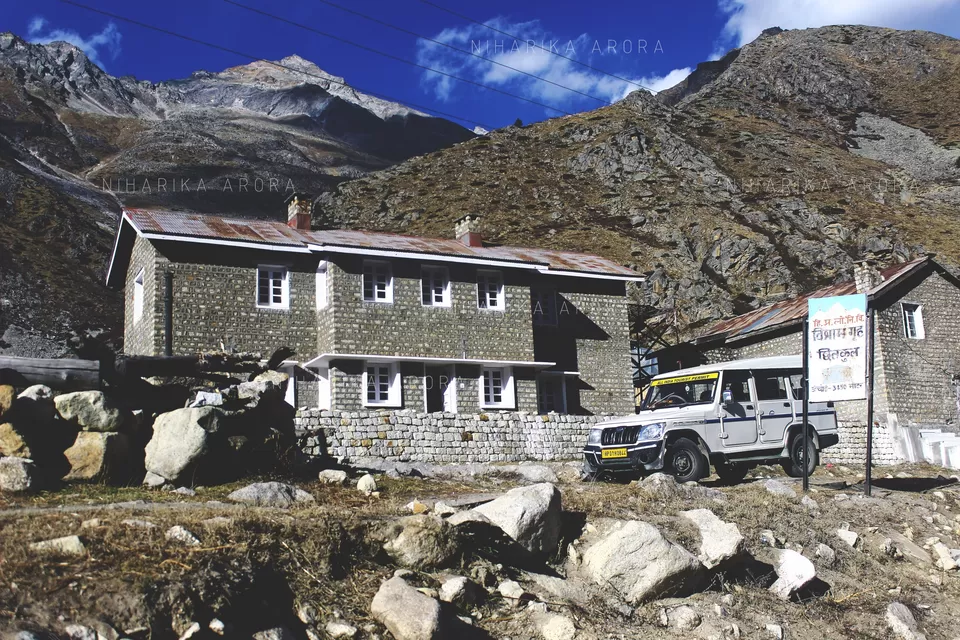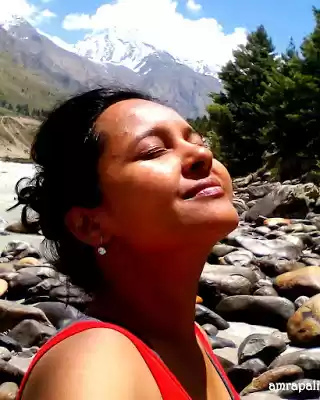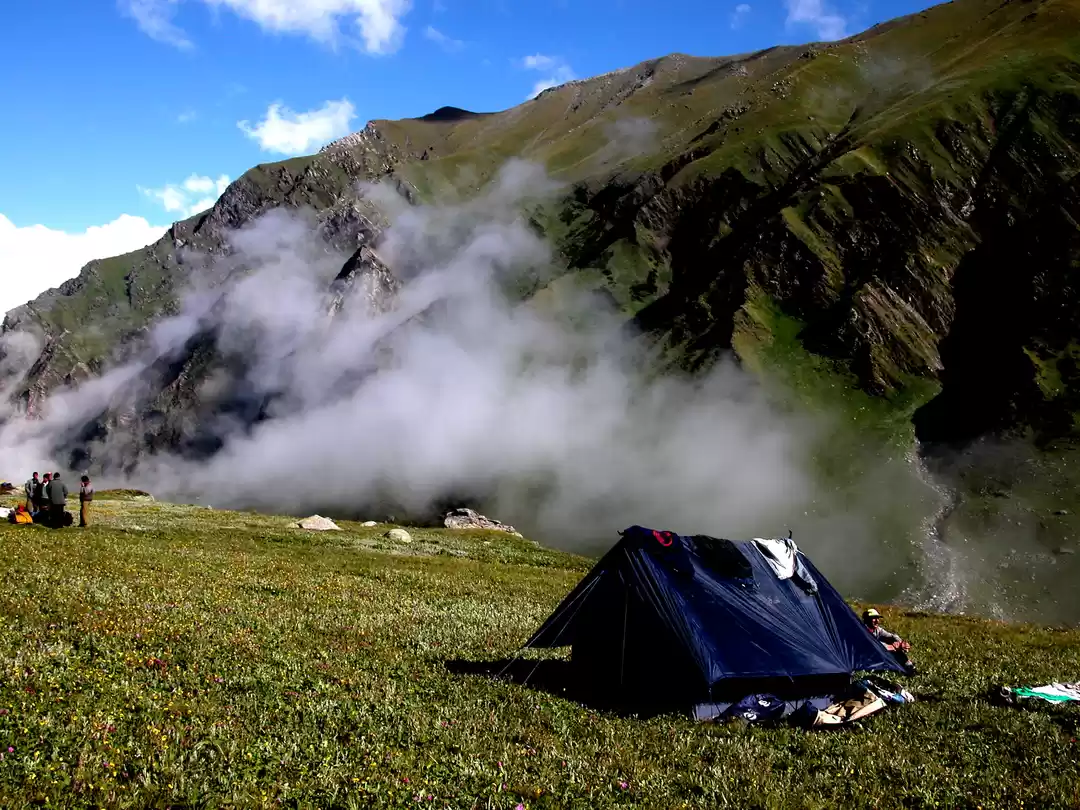
#SwipeRightToTravel
I had this insatiable feeling while coming back to Delhi, of not knowing if I would ever be able to visit this heaven again.
We, me and my younger brother, boarded HRTC bus on 24th October 2016 at 8 pm from the brutally designed (Brutal architecture I mean) Kashmiri gate bus terminal.
To save on some traveling costs we boarded a cheap HRTC bus. It’s nothing to be ashamed of course, but just be ready for a bumpy ride. Though everything was worth it in the end.
Delhi to Chhitkul is a journey of 15 h and 24 min i.e., (602.3 km) via NH44 and NH5, covering Hindustan-Tibet road. This road has been featured on the History Channel as one of the most “Deadliest Roads” in the world. Built in the 19th century, the Hindustan-Tibet road, also known as the Silk route or the National Highway No. 22, begins from Ambala in Haryana, as an offshoot of NH.1.
Departing from plains is any day an excitingly inexplicable opportunity for me. Though born in plains, I am purely and undoubtedly a mountain goat.
As we kept moving towards the verge of GT Karnal road and rolled onto the highways of Punjab and Haryana, we felt the air surge changing, maybe it was all psychology and the excitement of getting to experience a major change which I would appropriately term as magic.
To give our tired bodies and heavy souls a hint of rest, we stayed at one of my uncles Vernacularly designed house in Hamirpur village. We stayed there for 5 hours and then resumed our Journey by a taxi and a with a driver who belonged to Himachal only. This technique of coming half way by bus and doing a taxi and a driver of Himachal only, proved advantageous in staying spirited for the upcoming surprises.
We started rolling again. It was a caprice, as soon as you enter the valley of gods. Well! No one can help that. Such is the magic of the Devbhoomi.
I heard the language which was much different, most exquisite and enchanting, an addictive natural beauty.

It was almost 24 hours since we packed our bags and drove from Delhi. From Delhi to Sonipat, Panipat, Karnal, Ambala, Chandigarh, Anandpur Sahib, Nangal, Una where we had the tastiest 4 am tea, then Hamirpur, Bilaspur, Shimla, Thyog and Narkanda; From hot and humid to cold and dry. Shimla was crowded but eventually we were on our way towards Narkanda and onwards to Rampur, after being stuck in bumper to bumper traffic for 2 hours, with every taxi or car aligned in a reclining position facing uphill.
From the initiation of the NH5 itself, I started getting inexorable chills of thinking about the coming sceneries. The road was scooped out of giant Rocky Mountains, with hanging cliffs above.

When vehemently I decided to take on this adventure journey, my family was dazed and upset thinking of the audacity that they were unaware of until now. Well now I can say, on the NH5, I had to stay sanguine for my brother, although I myself had a bit of a nervous breakdown.

The Hindustan-Tibet road or the NH5 to Chhitkul is precarious and can easily shake even the strongest of the hearts. The landslide prone roads are not smooth all the way as a national highway is supposed to be, mere 3m wide, and Satluj River by the side, the ride scared even our expert driver. Our driver had to drink a bit during the dinner time and only then he could drive fearlessly in the night at around 12 am and onwards.
Now was our final battle with the roads.
From Narkanda, it was a 6-hour long body-shaking and bone-breaking ride. Taking 3 wrong roads, of which one was inaccurately illuminated by navigation, then landing on to the side of a cemetery at around 3 am near Karchham, we lost all hopes in that moment, but thanks to the only well-lit JP Karcham Wangtoo Hydroelectric project and it`s township, we could make out the right way somehow.


IMAGINE THIS AT AROUND 2AM!
The whole experience of driving in the night under millions of stars is inexplicable. The narrow bridges that we crossed and the wild water crossing on roads, made it the most unforgettable mountain road trip for us. Although the climb was indeed dangerous. I guess the beauty around was pacifying my fear.
With the increase in kilometer, we could feel the temperature dropping and knew that our destination was approaching. We had to look carefully for the only signages available that were on our route, the saviors, the milestones.
After an arduous journey in an Innova on the precarious route, we reached Chhitkul at around 4 am in pitch darkness. We parked in front of the only building visible, the PWD rest house. Due to the absence of any phone signals and the loss of my phone`s battery, we couldn't contact anyone. Thus we chose to stay inside the car wrapped in 4 heavy blankets. I realized, our breaths were going heavy and bodies were shifting to the numb mode. The only thing which can help you here is your psyche and will. We tried to sleep in the hope of a new and a better day.

We woke up at around 7 am when the rays of the blazing sun hit us, but gently. Believe me, your context and situations can you make you fall in love with nature anytime. We stepped out of the frosted car, and the first thing to rejoice our frozen bodies that morning was the sight of the village in front of us. Yes, love can happen at first sight.


We then knocked the doors of the PWD rest house care taker`s home, who then opened the doors of a cozy shelter where we lit angithis (room heater) and warmed our bodies for hours to prevent ourselves from getting hypothermic.

The rent of the PWD house was 1500 INR for two rooms for 2 days, inclusive of the traditional breakfast lunch and dinner.
One needs to do a pre-booking through various contacts from the army background. But if that’s not possible there are many guest houses which are equally good.

If you are in search of something fancy to eat or to bash about, Chhitkul isn't the place. Here you will get to taste the slice of nature and traditions.


Having only two or three eatery shops with packaged items available, this village is still far from the grip of globalization. May that phenomenon never take place here. Only BSNL networks are available, so you might want to take a sim of it.

Although there are a few traditional guest houses like the Thakur guest house, Rani guest house, but some modern construction is also being done for the upcoming guest houses to facilitate city people. We pre-decided to stay at the PWD rest house.

Every day, after the breakfast, I used to trudge along the valley to know extensively about this habitat, which completely made me contented with what I have in my life. Travelling keeps you grounded.

The village of Chhitkul with a population of 600 and 127 houses started expanding from the core where a stream of crystal clear water emerged from the mountains. The people of Chhitkul channelized the water for various purposes including drinking.

The artisans of the village are quite pedantic of anything they do to make someone's living as beautiful as possible.

The village has various sacrosanct spots with more than a 100-yr old Buddhist and Hindu temples, which also serve as festival celebration areas.

People here are diligent for whatever they indulge in, to earn meaningfully and to sustain happily.

Oh, such happy faces!! Well, that was one thing common in this entire village, a smile on each person's face, a symbol of pure happiness and contentment that binds them in a single thread and gives them the strength to face the difficulties of life together.


I saw a few Kinnauri women preparing feasts for their families because the last day they had a marriage ceremony. Those lovely green Kinnauri caps are a part of their dressing. Unlike most societies these days whose desire for 'more' never gets exhausted, these people know the true value of leading a simple life and learning to embrace it with whatever they have. Sustaining in 2 degrees Celsius at 3500 altitude isn't an imaginable situation for a city resident.


Local people told me that pilgrims to Kinner Kailash, only conclude their Parikrama in Chhitkul. “The powerful goddess of Chhitkul is the only non-Buddhist deity to which respect must be paid by the Parikrama pilgrims,” they said.
Except a few tourist destinations located km away from the village, one can ramble during the day times to enjoy an idyllic setting. One can also go to Govind Pashu Vihar National park and Sanctuary.

The drive or a walk down to the river is a very steep path full of loose stones. Though the breathtaking vista of the ombré blue Baspa river below makes for any inconvenience. Every morning the village ladies gather in a group of 3 or more and go towards the forest side covering more than 2km arduous journey of going up and down the valley to collect wood so that the evening and night time isn't as harsh as it is.

The Kinnaur farms are now cachet, enormously filled with thousands of red and golden apple trees, planted on the contoured fertile land.

Any sane person would never want to controvert the mesmerizing beauty of Chhitkul's landscape.


Not only Chhitkul, when we departed from the village, we saw villages in broad daylight which we missed while on our way to Chhitkul in pitch black night. Villages like Kalpa, Rakchham, are true scenic gems to the Kinnaur district.
Kinnaur is a magical land indeed. The affinity and the bonding that people share among themselves and visitors are unimaginable in urban areas.

I hope after this trip, my family never acts dubiously to allow me to explore, enjoy and learn the way I desire.






























